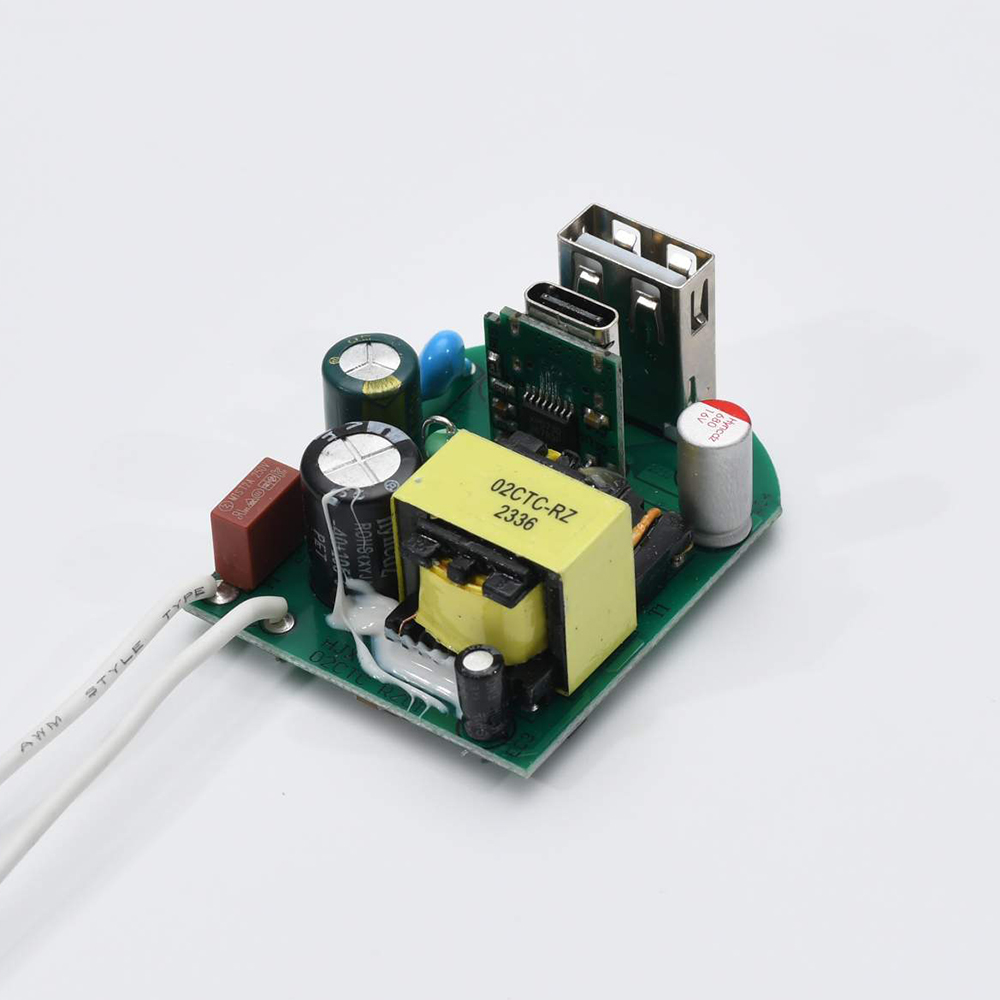Fast Charger USB Type-C Product Introduction
Fast Charger USB Type-C represents a significant advancement in power delivery and data transfer technology, characterized by its reversible connector design and robust capabilities. Unlike its predecessors, USB Type-C supports USB Power Delivery (PD) specifications enabling power delivery up to 100W (20V/5A), allowing for rapid charging of devices from smartphones to laptops. It facilitates blazing-fast data transfer speeds, supporting USB 3.2 Gen 2 at 10 Gbps and Thunderbolt 3/4 at up to 40 Gbps. The connector's versatility extends to alternate modes like DisplayPort and HDMI, enabling video output to monitors. Its symmetrical, 24-pin design eliminates the frustration of incorrect insertion. These features make it a universal standard for modern electronics.

Key Characteristics with Technical Data
High-Power Delivery (USB Power Delivery): Fast Chargers utilizing the USB Type-C connector with USB PD protocol can deliver significantly higher power levels compared to standard USB-A chargers. While a typical USB-A port might offer 5V/2.1A (10.5W), USB PD over Type-C scales through multiple voltage levels (5V, 9V, 15V, 20V) and currents up to 5A, supporting a maximum power output of 100W. This allows a compatible laptop like a MacBook Pro to be charged fully in a couple of hours, a task previously reserved for large, proprietary Power Adapters.
Superior Data Transfer Speeds: The USB Type-C interface is not limited to charging. When paired with modern USB specifications, it offers exceptional data throughput. USB 3.2 Gen 2x2, for instance, can achieve speeds of 20 Gbps. More notably, when combined with Thunderbolt 3 or 4 technology (which uses the Type-C connector), data transfer rates can reach 40 Gbps. This enables users to transfer a 4GB video file in under a second and connect to high-performance external storage, like NVMe SSD enclosures, at near-internal drive speeds.
Reversible Connector Design: A key user-friendly feature is the reversible, rotationally-symmetrical design of the plug. This eliminates the "USB flip" problem associated with older Type-A and Micro-USB connectors. The technical implementation involves a 24-pin configuration that is mirrored, ensuring correct electrical contact regardless of orientation. This design enhances convenience and reduces physical wear and tear on the port and cable from forced incorrect insertion attempts.
Multi-Functionality and Alternate Modes (Alt Modes): The USB Type-C standard supports Alternate Modes, which allow the cable to carry non-USB signals. This means a single cable can handle power delivery, data transfer, and video output simultaneously. Common Alt Modes include DisplayPort Alt Mode (supporting 8K resolution at 60Hz with HDR) and HDMI Alt Mode. This capability underpins the functionality of modern docking stations, where one Type-C connection from a laptop can power the device, connect to dual 4K monitors, and interface with peripherals like keyboards and external hard drives.
Durability and Longevity: USB Type-C connectors are designed for a minimum of 10,000 mating cycles (connect and disconnect actions), which is double the 5,000-cycle rating of the older Micro-USB standard. This robust mechanical design ensures the port can withstand the rigors of daily use over several years, making it a reliable choice for portable devices that are frequently plugged and unplugged.
Application Scenarios
The versatility of Fast Charger USB Type-C has led to its adoption across a wide spectrum of devices and environments. In the consumer electronics sphere, it is the standard charging and data port for flagship smartphones from Samsung, Google, and others, as well as for tablets like the iPad Pro. It provides fast charging, reducing the time needed to replenish a device's battery significantly. In the realm of computing, it is ubiquitous on modern laptops, from ultraportables like the Dell XPS series to powerful workstations. Here, it serves as a universal power input and a single-cable docking solution, streamlining workspaces.
In professional and creative workflows, the high-speed data transfer of Thunderbolt 3/4 over Type-C is indispensable. Video editors can work directly from high-capacity external RAID arrays, and photographers can back up massive libraries of RAW images to external SSDs in minutes. The ability to drive high-resolution displays via the same port used for charging and data makes it ideal for multi-monitor setups in offices and design studios. Furthermore, the technology is critical in portable peripherals such as external monitors, power banks capable of charging laptops, and advanced audio interfaces, creating a cohesive and powerful ecosystem of interconnected devices.
Maintenance and Care Guidelines
Proper maintenance is crucial to ensure the longevity and safety of Fast Charger USB Type-C equipment. Firstly, it is essential to use high-quality, certified cables and chargers. Substandard cables may not comply with USB-IF specifications, leading to inefficient charging, slow data transfer, or, in worst-case scenarios, damage to the connected device due to incorrect voltage regulation. Look for certification logos on the packaging.
Secondly, keep the ports and connectors clean. Dust, lint, and debris can accumulate in the device's port, preventing a secure connection and potentially causing short circuits. Use a can of compressed air to gently blow out any loose particles. For more stubborn debris, carefully use a non-metallic tool, such as a plastic toothpick, ensuring the device is powered off to avoid damage. Avoid using metallic objects that could bend the pins or cause a short.
Thirdly, handle the cable correctly. Avoid bending the cable sharply, especially at the connector ends, as this can break the internal wires. When unplugging, always pull the cable by the connector itself, not by yanking the cord. This prevents stress on the solder joints inside the plug. Store cables loosely coiled instead of tightly wrapped, which can strain the internal conductors over time.
Finally, be mindful of heat generation. Fast charging, by its nature, generates more heat than standard charging. While modern devices and chargers have thermal management systems, it is advisable to avoid charging devices on soft surfaces like beds or sofas that can trap heat. Charge on hard, flat surfaces to allow for proper ventilation. If a charger or device becomes excessively hot during use, unplug it and allow it to cool down before further use.








